Most people are familiar with this dish being called lo mai gai, though it’s more like zongzi. In Mandarin it’s known as nuo mi ji. This dish has multiple names from different countries; the Vietnamese take of this is called banh tet, while the Cambodians call it nom asom. In our family, we just call it zang. It is made with glutinous rice and is stuffed with things ranging from savoury salted pork fat, to chicken, to sweet red bean paste. Just like the variety of fillings, the whole thing can be wrapped in leaves like banana leaves, lotus leaves, and bamboo leaves.
I’ll be referring to the dish as zang for the rest of the article. Our family has been using mung beans, seasoned pork, and pork fat as the filling. The way we wrap ours is the southern Chinese way, as opposed to the pyramid-like northern Chinese version. My Grandma makes zang the best in our extended family, as Lucy and our relatives in Australia can attest to.
One weekend, Mom wanted to make zang on her day off work. She started with steamed mung beans, defrosted banana leaves, and partially cooked glutinous rice with a bit of coconut milk.
As for the pork and pork fat, she seasoned them with minced garlic, Golden Mountain seasoning sauce (similar to Maggi), black pepper, and salt. That’s it.
Each zang begins with a sheet of aluminum foil and banana leaf. The banana leaf is lightly oiled with a bit of vegetable oil to prevent the sticky rice from getting stuck to the banana leaf.
A bit of partially cooked glutinous was placed on the lightly greased banana leaf, which was then topped with mung beans. Lastly, strips of seasoned fatty pork were sandwiched between the mung bean layer and another layer of glutinous rice. The zang was rolled together and the ends were pushed in neatly. Sometimes a bit of extra rice was needed to fix up the ends.
Once both of the ends were neatly tucked in, the ends were folded over and then tied down with string. The zang needed to be boiled in water for about an hour to be fully cooked.
Two weeks prior to making zang, bags of frozen bananas were on sale at T&T and Mom thought she’d try it out. There was a bit of leftover partially cooked rice but there wasn’t enough.
No biggie, she partially cooked more rice and then added some shredded coconut.
Using cling film instead of aluminum foil, a small leaf of banana leaf was slightly slicked with vegetable oil. The coconut-speckled rice was placed on top and half a banana was placed on top of that. A little more rice was added on the top and then wrapped tightly together.
As she kept wrapping, a thought occurred to me: why not add toasted sesame seeds? And so a few of the sweet sticky rice packages were sprinkled with some aromatic fireworks.
Mom wanted to see if cling film would be okay to cook with. Just in case the cling film wouldn’t hold in the boiling water, all of the small packages were put in a ziplock bag. Wow, pretty impressive. She just unknowingly created sou vide-like cooking method. But then Mom started stabbing the bag to let water circulate in the bag. Err…
The plastic bag and cling film almost melted. A lot of them actually opened up, making the pot of boiling water murky and gross. The sealed zang were perfectly fine.
Though the same ingredients were used to make the zang, Grandma’s zang was on a different level. There’s just a certain something special. Grandma’s love, perhaps?
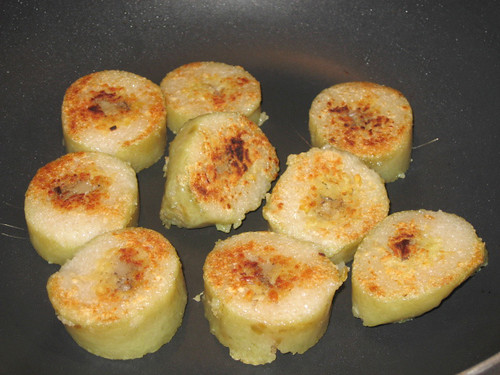
I think the best way to eat zang is the next day, after it has been pan-fried until nicely golden and crisp. The photo was taken at Grandma's house in 2007 during Chinese New Year.

I think the best way to eat zang is the next day, after it has been pan-fried until nicely golden and crisp. The photo was taken at Grandma's house in 2007 during Chinese New Year.
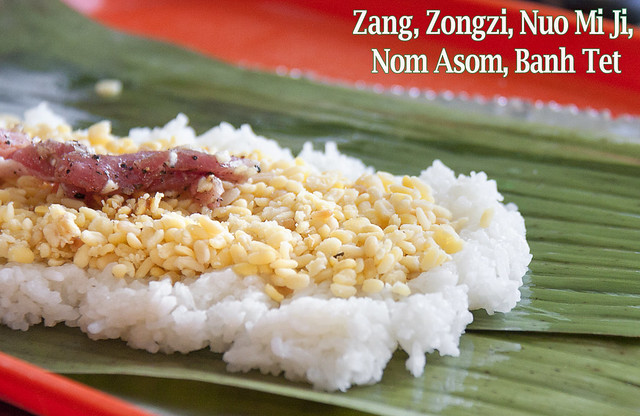
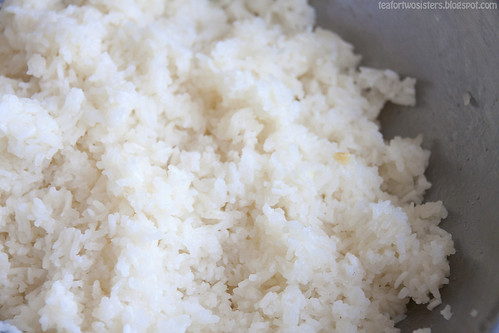

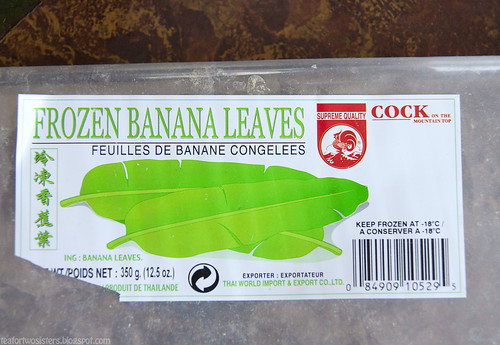
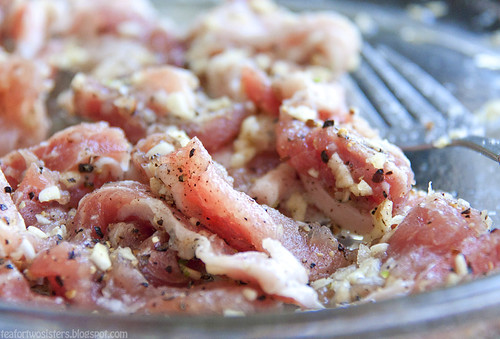
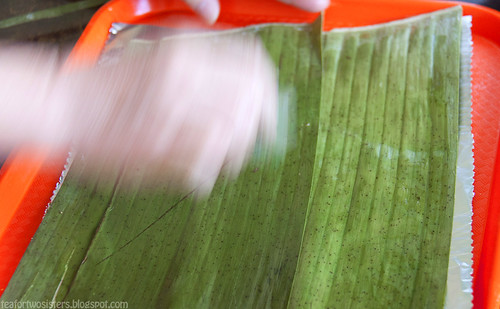
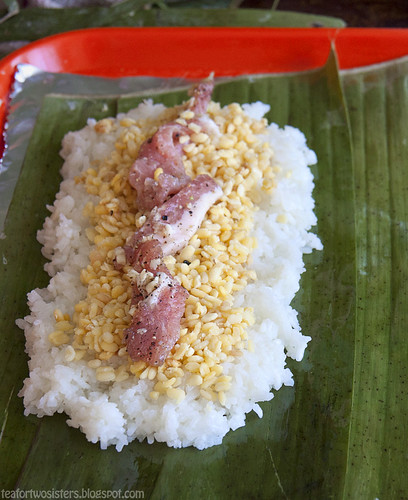

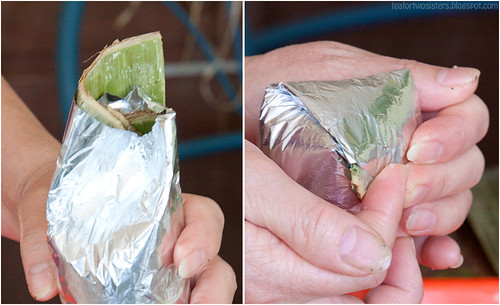
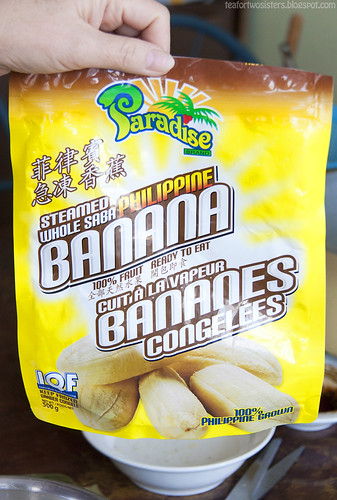

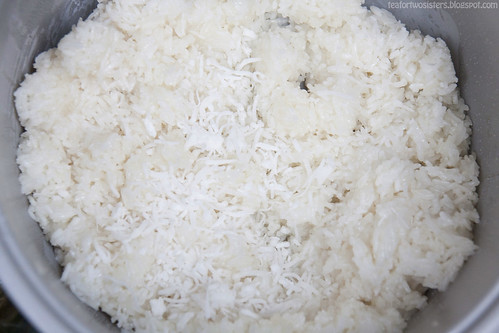
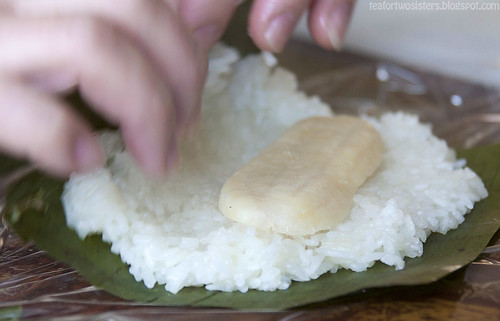
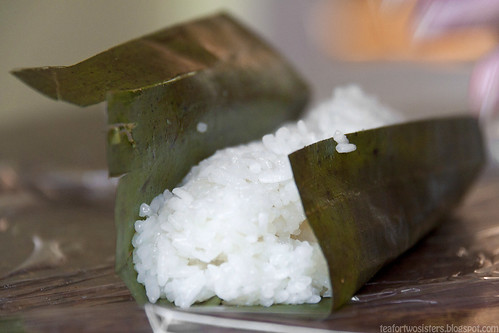
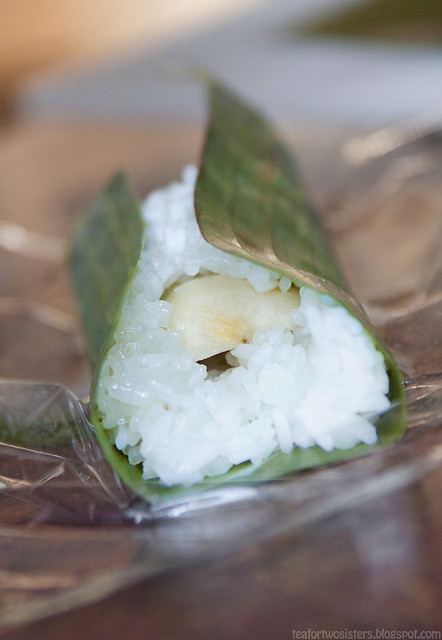

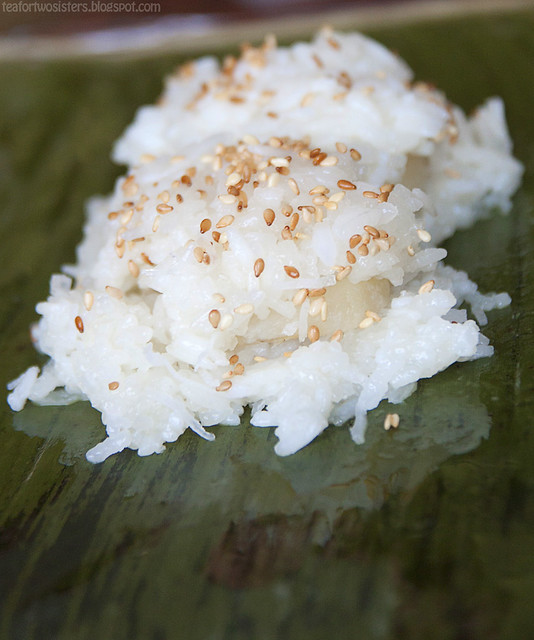
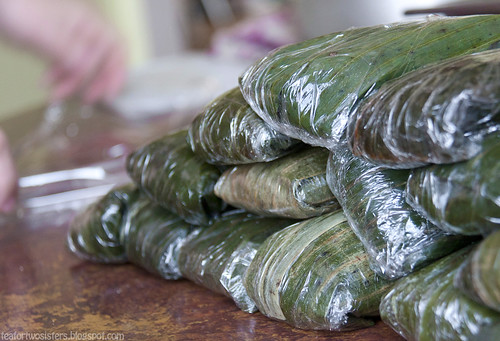

No comments:
Post a Comment
We'd love to hear your thoughts!